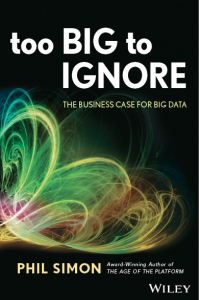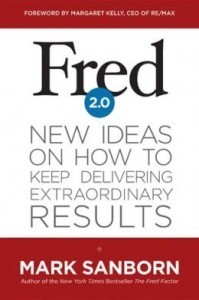Jacob S Paulsen's Blog, page 16
October 22, 2013
Teambuilding: The Roles and Goals Exercise
When I meet with groups or teams one of my favorite exercises to use is what I call “Roles and Goals.” Adapted from the original outline in Stephen Covey’s 7 Habits of Highly Successful People, the exercise helps participants connect with their deeper purpose while showing them how to work toward that deeper purpose every day.
This is the workflow of the Exercise:
 First, Ask each participant to write down all the different roles they have in life. Roles may include things like, father, mother, husband, wife, employee, business owner, student, teacher, writer, friend, church member, volunteer, disciple, son, daughter, mentor, leader, neighbor, citizen, etc. The idea is to get participants to brainstorm as many as possible. After a few minutes when I see pens start to slow down I will call on a few people to share what they have written down so far. This often sparks some ideas for the rest of the group who will be reminded of things they didn’t consider on their own.
First, Ask each participant to write down all the different roles they have in life. Roles may include things like, father, mother, husband, wife, employee, business owner, student, teacher, writer, friend, church member, volunteer, disciple, son, daughter, mentor, leader, neighbor, citizen, etc. The idea is to get participants to brainstorm as many as possible. After a few minutes when I see pens start to slow down I will call on a few people to share what they have written down so far. This often sparks some ideas for the rest of the group who will be reminded of things they didn’t consider on their own.
Second Ask each participant to narrow down their list to the top 5 roles they have in life. This could mean filtering out some of the seemingly less critical roles they wrote down or potentially combining several roles into something more broad. For example, professional, leader, employee, etc could be combined into “provider.” Some will combine different religious, spiritual, and/or volunteer roles together. The key here is to help each participant come to a conclusion about who they really are and what roles in their lives they really think of as important. Note: most will have a hard time getting the list down to 5. There will be a select few that will have only 3 or 4 and would feel like they were stretching to come up with a 5th.
Third, Ask each participant to pick one of these roles and write down a mission statement for that role in their life. I generally go on to explain that they are trying to articulate what their end goal is as it relates to that role in their life. When life is over (or that role is no longer relevant) what would it look like? This is where participants really have to stretch. I try to give them an example from my own roles at this point so that they can understand more clearly how that may look. Give them enough time and encourage people to share after they have completed their first one.
Depending on how much time you have you may choose to have participants write down goals for each of their 5 roles or you can encourage them to finish the remaining 4 later.
Next, ask them to list out 2-5 specific action steps that they can take to get them just a little closer to their goal. (If they have written all 5 goals ask them to list 1-3 action steps per goal.) The idea is to focus on the simple and easy to achieve things. If they think they need to take their family on vacation then the action steps would not be “take family on vacation.” Instead action steps may be, “find out how much vacation time I have,” or “check prices for flights to Disneyland.”
Lastly, ask each participant to get out their phones, tablets, or physical calendars and add at least one of these action steps per role to their upcoming week’s calendar. Putting the action onto the actual schedule is the turning point to creating power in the exercise because it helps them understand how to take something that is seemingly principled and make it practical.
I encourage participants to repeat the last two steps every week; reviewing their roles/goals and adding action steps to the calendar. This will keep life balanced.






October 8, 2013
Trying to Explain Twitter to People Who Don’t Understand It
I often hear from people about how much they love Facebook but hate Twitter. Or perhaps the most common way I hear it is “I just don’t understand Twitter.” Here I’m going to attempt to outline some of the key differences and advantages of Twitter comparing it to Facebook.
What Is the Core Difference Between Twitter and Facebook.
I think that perhaps one of the reasons that Twitter hasn’t caught on as much is because the platform isn’t driven by “adding friends.” When you joined Facebook you probably did so at the invitations of friends and you spent your first several hours on Facebook looking for your friends from high school, college, previous jobs, etc. Twitter isn’t as popular because users of the platform don’t attach the value of the social network to the number of their friends they connect with their. The purpose is different. Twitter users use Twitter to stay up to date on their favorite celebrities, news publications, trends, athletes, politicians, etc.
At the heart of Twitter is simplicity. Everything is built around simplicity while Facebook is built around keeping users engaged and in the Facebook ecosystem as long as possible.
To Twitter everyone is the same. To Facebook people, groups, and businesses are different.
Due to the nature of relationships between Facebook users; Facebook has to create different rules for interaction between users and between groups and users, and brands and users. This is why you have profiles, groups, and pages on Facebook. Profiles “friend” each other, profiles “join” groups, and profiles “like” pages. This prevents brands from being able to solicit friends or send marketing messages in a way that could be considered SPAM.
On Twitter everyone is the same. All profiles work the same way and not only is there no technical difference between people, groups, and brands but Twitter doesn’t even categorize or index them at all. The potential benefit here is of course the simplicity. To the user the entire platform functions the same.
Twitter Relationships are One Way. Facebook Relationships are Two Way.
On Twitter you do not send friend requests like you do on Facebook. On Twitter you can “follow” anyone you want. If I want to see everything that Stephen Colbert or President Obama tweet I can do that… and they don’t choose to accept my follow request. If some weirdo I’ve never met follows me on Twitter its more power to him/her. While Twitter does give one the ability to Block other users or set one’s profile to private, the premise is that what you tweet is out there for everyone to see and anyone can “follow” you (subscribe to your tweets).
Twitter is 140 Characters and that is it. Facebook is Farmville and Much Much More.
Twitter does have an API (application programmable interface) that allows 3rd party developers to build applications that interact with Twitter at some level but these applications live outside of the platform and generally don’t add to many features or new types of experiences beyond just tweeting and reading tweets. Facebook is far more complex. Facebook opens up their API to allow developers to create new games and other applications that add a lot more to the Facebook experience. Some love those and others hate them but they are unique to Facebook in that regard. Again, on Twitter simplicity reigns.
I have to say that I love Twitter. I heard someone say once that if you can’t put your thoughts into 140 characters it may not be worth sharing 
Test Message. If you subscribe to our RSS feed you should see this message. Please disregard.






October 2, 2013
Getting Ahead: Three Steps to Take Your Career to the Next Level by Joel Garfinkle
 In September of this year our online book group read “Getting Ahead: Three Steps to Take Your Career to the Next Level” by Joel Garfinkle. Joel is one of America’s top 50 executive coaches and the author of several books. This, his latest work, is designed to act as a guide to help people move forward in their careers.
In September of this year our online book group read “Getting Ahead: Three Steps to Take Your Career to the Next Level” by Joel Garfinkle. Joel is one of America’s top 50 executive coaches and the author of several books. This, his latest work, is designed to act as a guide to help people move forward in their careers.
The book makes a baseline assumption that high performance is in place and that other factors are preventing one from advancing. The book focuses on three factors; perception, visibility, and influence.
Many of the members of our group correctly jumped to the conclusion that these three factors (referred to as the PVI model) are what we often think of as office politics. With that in mind, while office politics has a negative connotation, PVI has a real place in understanding how the world works. It is also a realistic view of how one can add value to an organization and oneself beyond high performance.
One of the insights from the book I enjoyed the most was a point the author made about visibility. Many people are hesitant to voice their opinion in small or large group meetings. There seem to be a lot of excuses that people make to stay quiet. The truth, as the author explains, is that if we have any respect for ourselves we should value our own insights and opinions high enough to share them with the organization.
Another great lesson I learned from the author was the importance of managing up as well as down. A good manager works more on managing those above him/her than those below. A good leader also works on creating greater influence down, across, and up the organization. The greatest way to create influence is to help and serve others. Find out what they need and what their goals are and find a way to be part of the solution.
I would recommend this book to anyone who is a high performer who struggles with getting ahead due to having too low a profile or too quiet a personality.






September 27, 2013
Rules For Successful Blog Posting on WordPress
I have previously recorded a tutorial video about how to publish blog posts on WordPress but I have neglected to really cover all the necessary elements of a successful blog post… both technical and strategic.
A Compelling Title
Your title is a headline. It alone will generally determine who will read your content. Sell your blog with the title. Leave out symbols like the &, %, “, #, @, etc. These generally convert to code when syndicated to places like Twitter.
 Always Include An Image
Always Include An ImageImages not only make the content more presentable and professional but they also help your content to stick out when you share it on sites like Facebook. It gives Pinterest lovers something to pin and many WordPress themes will look to your images to create thumbnails for your home page layout or mobile blog layout. Along those lines be sure to always add a featured image (this can be the same image you use inside the blog post content).
In Content SEO Tricks
It is important to try to include some of the keywords within the text body of your blog post. Try to specifically include some of those keywords in Headings, Bold, Underline, Italic, Image Alternate Text, and Titles. These are the ways to draw extra attention to those words when the search bots read the page.
Always use the Excerpt
The built in WordPress Excerpt field is your place to build extra sizzle. This is the text that will show up directly under the title if the page displays in search results on Google or the like. It is also the text that is used on social networks like Facebook when the link is shared. The Excerpt should include some of those same keywords but most importantly needs to sell the content and make a compelling case as to why someone should proceed to read the full blog post.
Using Categories Correctly
Categories within WordPress serve two important purposes. The first is to help site visitors navigate your site content and find what they are looking for. The second purpose is to further help the search engine bots to index your content. Don’t have more than 12 categories and try to post content evenly across all of them.
Using WordPress Tags
By default the tags you list for the blog post act as the Meta Tag keywords read by search engines and they also act as a deeper navigation tool for site visitors. Depending on your WordPress theme, your selected tags may appear below your blog post content to help readers find other similar relevant content. Don’t stuff too much here either; using between 5 and 15 tags is a best practice.
Linking to Your Own Content
Another best practice is to cite old blog posts in new content. Linking to other content within your own site does remind search engines to index that old content anew. This doesn’t need to be a part of every blog post but on occasion, and as appropriate, don’t miss those opportunities.
I hope these simple rules can serve as a guide to help you craft powerful and compelling blog post content!






September 24, 2013
The Business Argument In Favor of Creating Twitter Lists
 Twitter lists are essentially a list of specific Twitter users. Anyone can create a Twitter list and can determine which users will be part of that list. Lists have a title and a description and can be designated as public or private.
Twitter lists are essentially a list of specific Twitter users. Anyone can create a Twitter list and can determine which users will be part of that list. Lists have a title and a description and can be designated as public or private.
You may choose to create a private list if you want to be able to quickly look at tweets from a select group or segment of twitter users without giving anyone else access to seeing the list. Perhaps you want to quickly look at tweets from America’s Got Talent Judges but you don’t want anyone else to know you are obsessed with the show?
Public lists are more common and there are many benefits to both creating them, sharing them, and begin listed in them. Here are some things to consider.
Build Your Own Lists:
If you tweet primarily about a specific category or topic niche you could build a list of users who tweet about similar things.
This will make you stand out as the top source within that category. You are the gate keeper of who is and isn’t on the list and that makes you the most credible member of the list.
Subscribe to Lists that Interest You:
There is often no good reason to reinvent the wheel… or the list in this case. If someone else already built the list then you should just find it and subscribe to it.
Lists also present a good way to follow the tweets of users whom you don’t want to publically follow. If you are concerned about following someone because you don’t want it to appear as an endorsement you can also follow a list that they are on.
Leverage the Lists
Utilize lists to keep a close eye on a topic or situation. This is often far more effective that looking at your home feed which contains tweets from everyone you follow.






September 18, 2013
The Three Ps to Getting Web Traffic
 To get really generic and top level I think you can break any web traffic strategy into these three Ps.
To get really generic and top level I think you can break any web traffic strategy into these three Ps.
Produce Quality Web Content
If the content on the website isn’t of great value to a large audience then no further strategy is necessary because the traffic will rarely come and never stick. The cliche in the industry has always been “Content is King” precisely because it is the foundation to all other strategies. One must consider a content niche with a strong emphasis on understanding the target audience and their needs. Producing Content is the first P of the three Ps of Web Traffic in the same way that Content is the first C in the three Cs of online marketing. It is first and it is critical.
Proper Technology and Formatting
I have seen many organizations suffer from poor technology that stops traffic like putting a closed sign on the door of the business. If the search engines cannot read or index the content correctly they will not serve up your pages when people search for relevant content. This means a lot of things including the right meta tags, sitemaps, permalink structure, 404 handling, sub-domain management, and more. Some technologies have gone a long way to ensure this is made as easy as possible. WordPress, Joomla, and others are popular for that very reason.
Promotion
If you want to get traffic you have to let people know your content is there. Promotion can be done in a lot of different ways and this is integral to a search engine optimization strategy but also has everything to do with direct promotion in the more traditional sense. To be more specific, promotion includes much of what you may do with building communities on Twitter, Facebook, YouTube, via Email etc. It also has to do with becoming a category expert on popular forums and discussion boards relevant to your topic. Where you may have an advertising budget, promotion also includes buying advertising online or offline.
This may all sound all to simple and obvious but I have found that if I can take seemingly big topics and break them down into three simple concepts it becomes much easier to teach and to keep all the strategies in line.






September 11, 2013
Tips For Creating a More Positive Experience When On The Road for Business
 I suspect that there isn’t anything below that would be too ground breaking for anyone but if you travel you might find that some of the lessons I’ve learned can serve as reminders or tips for you too.
I suspect that there isn’t anything below that would be too ground breaking for anyone but if you travel you might find that some of the lessons I’ve learned can serve as reminders or tips for you too.
1. Eat light. I have found that I’m tempted to eat bad for me meals simply because I can or because the company may pay for it. This is not only good for my health in the long term but it also tends to cause for a bad nights sleep, habit breaking issues when I get home, and a nagging feeling that working out that night won’t feel so good.
2. Work Out. At home its really easy to make excuses to not work out. On the road its a little more difficult. I don’t have to put the children to bed or get them breakfast in the morning. I should replace that time on the road with going for a run or getting on a machine in the hotel fitness room.
3. Just leave that TV off. Honestly its a trap. If I turn it on it will consume me until very late hours of wastedness. I just get the work done on the computer that I so claim is engulfing me and if really tempted then may watch a single episode via Hulu or a movie on Netflix and then go to bed. I can do all this without turning on the TV.
4. Video call home. Technology is great and the family wants to hear from me just as much as I want to see them.
5. Find a travel hobby. I like geocaching. Everywhere in the world I can geocache and its always a great way to see a city and explore. I have friends who like to find certain types of restaurants, hang out in malls, or visit a book store. If the destination city has a sports team in town buy a ticket. Find a hobby that will help you explore the town somehow.






September 10, 2013
Too Big to Ignore: The Business Case for Big Data by Phil Simon
 I read this book as the September monthly selection in the 12 Books Group.
I read this book as the September monthly selection in the 12 Books Group.
In short I think this book is a great read for anyone who is trying to understand what Big Data is and what the positive and potential negative implications are for businesses. It has the right amount of technical information presented in a concise and easy to understand layout.
One of the biggest takeaways I had from the book was the chapter that discussed the various tools, programs, and companies that currently exist to frame and support the technical side of Big Data. Learning more about this tools and understanding how companies are implementing them really put the whole thing into perspective for me.
I also really took a lot from the chapter about the potential negative impacts of Big Data. This serves as a good reminder that with great data comes certain responsibility to be ethical with the data and to protect it from those who may have bad intentions.
If you are trying to wrap your head around Big Data with an intention of knowing how you can get started, if/who you can use Big Data in your organization; then I would recommend starting with this book by Phil Simon.






August 7, 2013
Fred Factor and Fred 2.0 by Mark Sanborn
In our book group last month we read “Fred 2.0” by Mark Sanborn which is a sequel of sorts to the best selling book “The Fred Factor.” These books tell the story of Fred the Postman and use his story as an example of extraordinary service and results.
 Fred the Postman, once the postman for the author is Denver Colorado, lives a life of service. Fred believes that its only the right thing to do to go the extra mile and take care of people under your stewardship. Mark’s first book, “The Fred Factor” talked about the 4 Fredlike principles and sold over 2 million copies. This second book, “Fred 2.0″ is like the graduate course and expands on what it means to truly be a Fred.
Fred the Postman, once the postman for the author is Denver Colorado, lives a life of service. Fred believes that its only the right thing to do to go the extra mile and take care of people under your stewardship. Mark’s first book, “The Fred Factor” talked about the 4 Fredlike principles and sold over 2 million copies. This second book, “Fred 2.0″ is like the graduate course and expands on what it means to truly be a Fred.
The book is full of great insights and reminders. Among those, one the biggest things that sticks out to me is the emphasis on living a life of service based on loving and feeling compassion for those around us. This paradigm sounds a little mushy on the surface and even more impossible in real application. The harsh truth is that we must first love people so that we can serve them and create value for them. Only then can we create lasting relationships and acquire wealth in all its forms.
I also loved the core idea that we need to raise Fred Jr. today. Mark gives some great examples of how we can teach our youth the Fred principles and the types of results we may expect from that effort. Another chapter that stuck with me is called “Renew Your Resolve.” As much as any of us strive to provide great service and to serve those around us, we will on occasion find ourselves knocked down to the ground. Without the ability to renew and re-commit ourselves to the greater purpose that drives us we will ultimately lower our standards to mediocrity.
Lastly I might add that among my favorite things about these books is that they are not lengthy. In the authors words he told me, “You could buy the book in the Dallas airport and have it read before you land in New York.” That is true and I appreciate an author who writes about big ideas in few words.






August 5, 2013
What Does Love Have to Do With It?
Last night I attended a Webinar with author Mark Sanborn and he made a comment that really stuck with me. He mentioned that commitment and love are interlinked. When we love someone we are committed to them. Love without commitment is not really love. When commitment is lost, love is lost. I think in our current society people don’t fully understand this relationship between love and commitment. Loving someone inherently means that you are committed to working together to overcome all trials and suffering. It still takes two to tango of course as we cannot make choices or take action on behalf of another.
In that same thread Mark also reminded attendees of the webinar that Love is a verb while like is an emotion. This is important to understand that ultimately in order to truly create value for others we must first start by feeling and showing unconditional love for everyone. That is very difficult but it is at the heart of personal development and any form of wealth creation. Unconditional love means that we recognize the good in all people. In my own sense I think of it in terms of all people being children of a loving heavenly father.
This does not mean we must like everyone. To like is, as Mark put it, an emotion and we often can’t control our emotions. We can however control the way we react to those emotions. Love takes place when we get cut off on the highway and even though we don’t like it, we accept that maybe that person is having a rough day or maybe they are rushing to the hospital to see a loved one. We have to believe that they of great worth and most likely not intentionally trying to make our day worse.
Wealth creation begins with unconditional love because you cannot begin to truly serve people until you understand them and care about them. Only when you begin to serve them can you start to create value for them. Only when value is created does wealth begin to accumulate. This wealth of course is not always monetary wealth. School teachers for example get paid a fraction of what they should but they still choose that career because of the wealth they find in helping their students learn and grow.
These two ideas, as shared by Mark Sanborn, gave me great hope and inspired me to be better. I hope you also found value!









